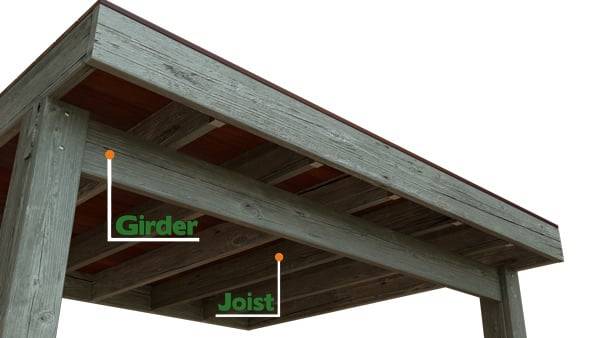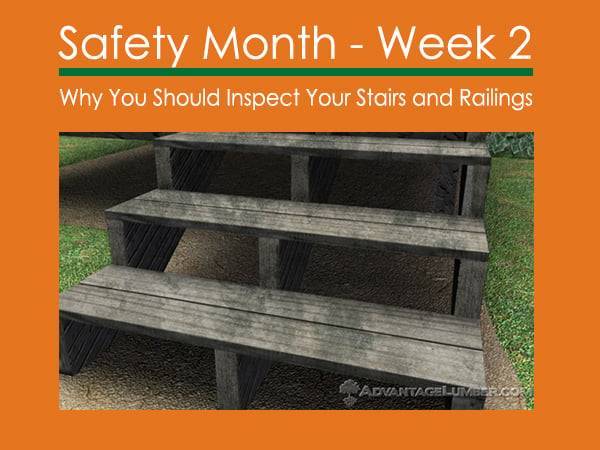Stairs and railings are often neglected during inspection and maintenance, which is unfortunate because both components are crucial to the safety of friends and family on your deck.
Deck Inspection
Deck Inspections: Tools You’ll Need
Every building inspector needs the correct tools and safety equipment to properly check decks. Without these tools, they wouldn’t be able to tell if your deck is sound, or if it needs some attention. It’s beneficial for homeowners to have the same tools as these inspectors so they can properly check their deck themselves. While some inspectors carry more than enough tools, homeowners can find what they need around the house.
Deck Inspection: How to Inspect Ledgers, Girders, and Joists

Girders and joists are an integral part of your deck. They work in harmony to support the entire walking area. Because these connections are so important, you need to inspect that they were both properly installed, and properly fastened.
Deck Inspection: Railings and Stairs
Broken railings and stairs are a leading cause of deck related injuries. Years ago, there weren’t any codes to adhere to when constructing these elements. Most railings were simply nailed without any structural support and when people leaned on it, they failed to stay in place. Stairs are also another common area where improper installation and improper fastening is the culprit of injury.
Deck Inspections: Facts

Did you know that roughly 40% of all the decks in America are deemed safe? When you add in the fact there are an estimated 40 million decks that are over 20 years old and you quickly realize becoming a statistic is a real possibility for many homes.
Just like every aspect of your home needs to be solidly and correctly built, so does your deck. Even though decks appear to be simple and straightforward structures, you should consider them to be a rooms without walls or a roof. It’s an outdoor space that needs to be planted in strong foundations.
Deck Maintenance – 7 Tips for DIY Deck Inspection

How to Inspect Your Deck
According to the North American Deck & Railing Association (NADRA), the majority of the decks were installed over 20 years ago. Unfortunately, the large majority of those deck owners fail to adequately assess the structural health of their deck. It makes perfect sense to make sure that the structure under your feet was built properly and is maintaining its structural integrity. If you have never inspected your deck, then now is the best time to take a look “under the hood.” By measuring the health of your outdoor living area, you’ll give yourself peace of mind in knowing that your deck is safe and sound. NOTE: It doesn’t matter what deck you have, these deck inspection tips apply to all decking material.
With the recent string of bad weather in the United States (hurricanes, tornadoes, flooding and even dust storms!), the following deck inspection tips are a great way to ensure that you can not just enjoy your deck, but be safe on it as well.
Deck Inspection Checklist
1. How are the fasteners that run through the ledger holding up?
If your deck was installed with at least 1/2″ diameter lag screws your deck should be in good shape. If you or your deck builder ran nails through the ledger to the rim joist, you should, one by one, replace them with the stainless steel or hot-dipped galvanized lag screws and be sure to use washers for a more secure fit. Using nails to fasten your deck to the home is a disaster waiting to happen.
If you, after a recent storm with heavy winds and/or flooding, you notice the screws and ledger starting to loosen up, reinforce them immediately with 1/2″ diameter lag screws.
